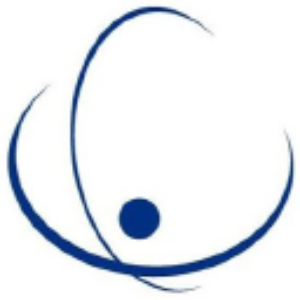Geospace Technologies Joins Russell 2000®, Russell 3000® and Russell Micro-Cap Indexes
Geospace Technologies (NASDAQ: GEOS) announced its inclusion in the Russell 2000®, Russell 3000®, and Russell Micro-Cap® Indexes as part of the annual reconstitution effective July 1, 2024.
This inclusion is expected to enhance the company's visibility among investment professionals, expand its shareholder base, and increase liquidity in its stock. The Russell 2000® Index is a prominent benchmark for small-cap stocks, encompassing the 2,000 largest U.S.-traded stocks by market capitalization and style attributes.
Russell indexes are widely used by investment managers for index funds and as benchmarks for active investment strategies, with approximately US$10.5 trillion in assets benchmarked against them.
Membership in these indexes is updated annually and remains in place for one year.
- Inclusion in Russell 2000®, Russell 3000®, and Russell Micro-Cap® Indexes.
- Enhanced visibility among investment professionals.
- Expanded shareholder base.
- Increased liquidity in GEOS stock.
- Effective July 1, 2024.
- None.
“Inclusion into the Russell 2000® Index, one of the most widely used benchmarks for small-cap stocks, is a positive development for Geospace Technologies,” said Walter “Rick” Wheeler, President and CEO of Geospace Technologies. “Companies added to the Russell 2000® typically broaden their visibility among investment community professionals, expand their shareholder base and generate increased liquidity in their stock.”
Membership in the Russell 2000® Index means automatic inclusion in the small-cap Russell 2000® Index as well as in the appropriate growth and value style indexes. The Russell 2000® Index encompasses the 2,000 largest
The Russell indexes are widely used by investment managers and institutional investors for index funds and as benchmarks for active investment strategies. Approximately
For more information on the Russell 2000® Index and the Russell
About Geospace Technologies
Geospace Technologies is a global technology and instrumentation manufacturer specializing in vibration sensing and highly ruggedized products which serve energy, industrial, government and commercial customers worldwide. The Company’s products blend engineering expertise with advanced analytic software to optimize energy exploration, enhance national and homeland security, empower water utility and property managers, and streamline electronic printing solutions. With more than four decades of excellence, the Company’s more than 600 employees across the world are dedicated to engineering and technical quality. Geospace is traded on the
Forward Looking Statements
This news release contains “forward-looking statements” within the meaning of Section 27A of the Securities Act of 1933, as amended, and Section 21E of the Securities Exchange Act of 1934, as amended. These forward-looking statements can be identified by terminology such as “may”, “will”, “should”, “could”, “intend”, “expect”, “plan”, “budget”, “forecast”, “anticipate”, “believe”, “estimate”, “predict”, “potential”, “continue”, “evaluating” or similar words. Statements that contain these words should be read carefully because they discuss future expectations, contain projections of our future results of operations or of our financial position or state other forward-looking information. Examples of forward-looking statements include, statements regarding our expected operating results and expected demand for our products in various segments. These forward-looking statements reflect our current judgment about future events and trends based on currently available information. However, there will likely be events in the future that we are not able to predict or control. The factors listed under the caption “Risk Factors” in our most recent Annual Report on Form 10-K which is on file with the Securities and Exchange Commission, as well as other cautionary language in such Annual Report, any subsequent Quarterly Report on Form 10- Q, or in our other periodic reports, provide examples of risks, uncertainties and events that may cause our actual results to differ materially from the expectations we describe in our forward-looking statements. Such examples include, but are not limited to, the failure of the Quantum or OptoSeis® or Aquana technology transactions to yield positive operating results, decreases in commodity price levels, the continued adverse impact of COVID-19, which could reduce demand for our products, the failure of our products to achieve market acceptance (despite substantial investment by us), our sensitivity to short term backlog, delayed or cancelled customer orders, product obsolescence resulting from poor industry conditions or new technologies, bad debt write-offs associated with customer accounts, inability to collect on promissory notes, lack of further orders for our OBX systems, failure of our Quantum products to be adopted by the border and security perimeter market or a decrease in such market due to governmental changes, and infringement or failure to protect intellectual property. The occurrence of the events described in these risk factors and elsewhere in our most recent Annual Report on Form 10-K or in our other periodic reports could have a material adverse effect on our business, results of operations and financial position, and actual events and results of operations may vary materially from our current expectations. We assume no obligation to revise or update any forward- looking statement, whether written or oral, that we may make from time to time, whether as a result of new information, future developments or otherwise, except as required by applicable securities laws and regulations.
View source version on businesswire.com: https://www.businesswire.com/news/home/20240626218248/en/
Caroline Kempf, ckempf@geospace.com, 321.341.9305
Source: Geospace Technologies Corporation






